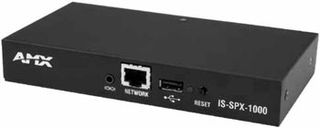Challenges and Solutions in Getting Content to the Screen
At the most fundamental level, rolling out a digital signage system — whether for retail, education, corporate applications, transportation, or entertainment venues — involves the use of some kind of media player to get content up on the screens. At the simplest level, a consumer appliance like a standard PC or a DVD player often acts as the media player for system with one or a small number of screens, but when there are many (maybe up to thousands) screens involved, either dedicated, small-footprint, specialized, purpose-built digital signage media players or purpose-built PCs are spec’d in.
The definition of “media player” is increasingly confused. All those small inexpensive media players from companies you see at all the tradeshows — how can the average user, or even integrator, tell them apart? Is Flash still the format of choice for most digital signage content? (And does that mean we will always need a highhorsepower media player?) Also, there are new SVG-based (scalable vector graphics) small-footprint media players that have more content horsepower in a smaller package than most of the small Flash-based media players out there. What is behind this trend?
To address these questions, I asked some of the top minds in digital signage today — some content management suppliers, some integrators, and, yes, some media player suppliers — what is a media player, and how much “player” do you need?
“There are a plethora of media players in today’s digital signage environment,” says Jim Huber of Nor-Com, one of the top systems integration companies in the U.S. (www.nor-com.com). “How does one wade their way through these offerings? There must be some decision points in your selection. The first ‘Y’ in the road is if the player is networkable — there are many players and systems coming out in the hundreds of dollars range, and what is prevalent is the lack of network connectivity, so the end user finds him/herself sneaker netting the content, which is a logistic nightmare as the scale increases. The next fork in the road is the newer decision of solid state or not. There are environmental issues to promote the utilization of a solid-state hardware device, but understand the inherent limitations of memory retention to the technology. “
Serge Konter, marketing manager of one the interesting new suppliers of media players, SpinetiX, comments, “Users and integrators need to look carefully at the specifications, as a lot of different devices go into the category of ‘media players.’ For example, you find small PCs next to purpose-build devices. Or some only have ‘photo frame’ like functions as where others can display dynamic information such as streaming, data feeds, etc. Another differentiation criterion is whether a central server is needed or not.
“In essence, users and integrators need to ask themselves three questions: Do I choose a PC (with all the disadvantages) or a real DS media player (made for reliable and 24/7 usage)? Am I happy with showing basic information (text, picture, video) in predefined areas or do I want to be able to include RSS, streaming, interactivity and video wall synchronization? And, do I need a central server to manage all the media players or can I do it without (which simplifies installation, maintenance, and costs)?”
CMS Selection

SpinetiX has broken ground with new generation media players that use SVG (Scalable Vector Graphics) for image processing. The new HMP 200 Hyper Media Player from SpinetiX is capable of publishing information, video, pictures and text in 1080p Full HD to any screen or display device.
Since the content management software selected for a digital signage rollout is crucial to its functionality, I asked several prominent spokesmen from the software camps to comment on the selection of media players. “The bigger challenge is you can’t evaluate a media player out of context,” comments Ryan Cahoy, of RiseVsion, a SaaS provider. “If you don’t look at the selection of a media player in conjunction with the software and display, you could select something that isn’t compatible. I think the average user needs to evaluate solutions where media players are bundled with software to ensure they get a solution that works.”
Also in the content management software side, but in the Premise-based (not SaaS) camp, is Jeff Collard of Omnivex. “The definition of a media player is a problem for people, and I think you need to make a differentiation between simple utilitarian devices (appliance) and PC-based devices,” he says. “Within the PC realm, you need to differentiate between lowend (Atom/Pentium) machines and high-end (Core 2 Duo) machines. The capabilities and results for all three are quite different and you have to think about your communication strategy. The low-cost options have significant detractors but if all you want to do is flip through some files, then it may be the right path for you. The old adage that you only get out what you put into it still applies. For small screens like digital picture frames or ‘shelf talkers,’ the resolution is low and the content requirements relatively simple. Most large screens today are high resolution and often interactive.
“The appliance class machines are fairly simple: they tend to do their rendering via dedicated hardware, so they may be restricted to a specific type of video file that runs through a hardware encoder,” explains Collard. “These devices may be limited to a specific orientation like landscape, so if you want to mount a digital frame in portrait, you have to rotate the content before you send it. Interactivity is very limited. Content is typically restricted to fixed templates or singe asset at a time, although some devices provide a little more flexibility. If you just want a few ‘channels’ of content to loop indefinitely, these devices do a reasonable good job.
“Low-end PC-based systems are limited in content capabilities,” concludes Collard. “If you have simplistic content and don’t ever plan to do more with it, it will do, but in most installations the bar gets raised over time. High-end PC-based systems provide the capability to run complex content, sync multiple displays together without reducing image quality, and provide richer interactive experiences. Sophisticated digital signage products operate on this class of PC because they need the greatest flexibility in content types and capabilities. Typically these systems offer lower operating costs on larger networks. These ‘smart’ systems place intelligence at the player for a richer viewer experience and the ability to optimize content automatically.”
Displays The Thing
What does a guy who works in the display side, think of the new landscape? “Media players used to be referred to the as low-cost, small form factor, and simple media playback devices,” says Michael Ferrer, of NEC Display Solutions. “These were very much like JPEG players — like the ones used on digital photo frames. They were inexpensive and not much brain power or horsepower. Now, the term media player is interchangeable with digital signage player, media player/PC, digital engine, digitalmedia player, and so on. And there are a lot of different flavors: Linux- or Windows-based; hard drive or Flash memory/solid state-based; networked, or stand alone; used with web-based or premise-based software bundle; small form factor or big enough to be rack mounted; single output or multi-output; HDMI, VGA, DVI, or Display Port outputs; fan or fanless; plug-in SBC (Single Board Computer) or external media player (set top); low-power or high-power consumption… And then there’s the Intel OPS.
“It’s getting harder to tell apart the low-cost JPEG player to the more sophisticated digital media players. More and more hardware manufacturers are coming out with the wonder box that is relatively cost-effective and can pretty much do the work and perform the basic digital signage applications/tasks (i.e., playing multiple ‘zones’ and possibly a ticker across the bottom without any noticeable hiccups or stutter). Add to this the ability to be networked and managed using a SaaS-based software solution, and you have the makings of a very competitive market.”

The new AMX Inspired XPress media player supports RSS feeds for news, weather, sports or any other data that can be obtained via a RSS feed for up-to-the minute information.
Recent Developments
While everyone I spoke to commented on the proliferation of low-cost, low-functionality devices, everyone was quick to point out that “you get what you pay for,” and that one size does not fit all. “The demands on the media player for MPEG file playout differ significantly from the playout of other file formats, let alone other features that deliver high value such as real-time rendering, multi-zone layout, embedded anonymous video analytics, and system health monitoring,” says Lyle Bunn, of Bunn Co., one of the most respected digital signage consultants in the industry. “When the media player is used as an edge device in a ‘thin client’ architecture, in which limited performance demands are placed on it, the media player can be attached to or integrated into the display housing. Solid state, low power consumption, and convection heat dissipation in the appliance characterize this type of application. More robust media management will demand greater functionality and performance from the media player.”
In other words, don’t push a client to adopt low-cost appliance media players before you are sure what level of functionality will be needed. That being said, there are some interesting new developments. Samsung has been successful with their N series displays, embedding the PC in a screen. NEC has a single-board computer (SBC) that is a computer that plugs into the expansion card slot of select LCD monitors. “This type of solution eliminates the need for an external PC, cabling, mounting, and power supply,” says NEC’s Ferrer. “It provides for clean, hidden integration, while reducing the bill of materials needed for installation and eliminating the hassle of hiding hardware equipment. In addition, the ability to drive discrete images on two different displays from one SBC via a DVI-I output allows for greater functionality while further reducing cost.”
And in the realm of the smaller-footprint appliances, there are also some new generation devices out there now. Specifically, there are new SVG-based (scalable vector graphics-based) smallfootprint media players that have more content horsepower in a smaller package than most small Flash-based media players. What is behind this trend? Well, what better place to start than with one of the guys who started the trend: Serge Konter of SpinetiX. “The industry trend isn’t driven by Flash or SVG (Scalable Vector Graphics) technology, but by devices which are smaller and use less electricity. SVG-enabled devices offer the same functionalities as Flash-enabled devices, but they operate more effectively and with less power consumption. The industry trend will therefore go more and more towards SVG.”
Indeed, SpinetiX has made big splash over the past year or so. SpinetiX uses SVG (Scalable Vector Graphics). Without overdoing the analogy, it’s something akin to Apple doing an end-run around Flash to try to establish a smaller package with energy- and memory-efficient video processing in its iPhone and iPad. (Geffen now also has a SVG-based media player and AMX has one as well.)
“SVG is an interesting platform to build upon. Its sustainability will be determined by how much traction it receives in the coming months by independent developers, as with all open platforms,” comments Nor-Com’s Huber.
“Most players support Flash. However, it’s hard to say that’s the format of choice. I think we are witnessing a larger need for H264, which, like Flash, requires a good CPU for playback,” says Yael Elstein of C-Nario.
One thing is certain: customers’ needs for robust content, content that does not just loop on a screen to viewers walking past, but content that is increasingly interactive, or context-driven, or both, will only increase. Whether your system needs a simple appliance type media player or full-blown PCs, things are changing rapidly in the digital signage landscape of media players. But the good news is, there has never been more choices available, from a large variety of suppliers.










